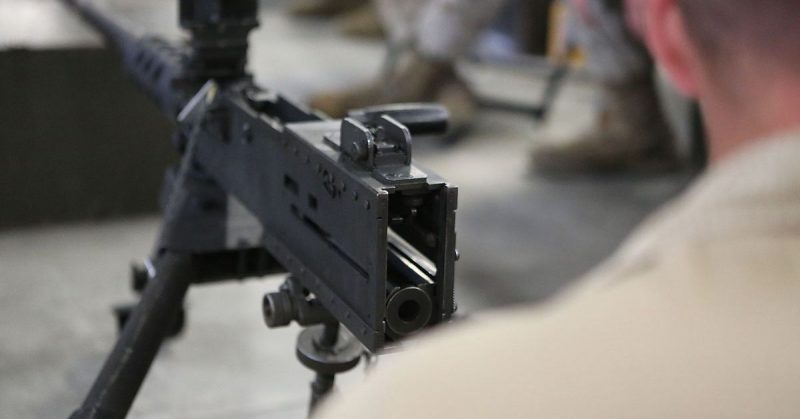The Associated Gun Clubs of Baltimore invited four WWII veterans and their families to come to a gun range in Marriottsville to fire WWII-era weapons. It was part of the 43rd Bomb Group Association’s annual reunion.
Stuart B. Eynon, 94, could still remember how it felt to fire twin .50-caliber machine guns and the way they shook the entire bomber aircraft when he pulled the trigger. He got the chance on Saturday to fire the same model of M2 Browning. After getting back behind the trigger, Kenyon said that it was “like riding a bike,” something you don’t forget. He did, however, add that he forgot how noisy the guns were.
Bryant Cramer, president of the gun association, loved the concept of bringing the veterans out to the range. “We don’t adequately appreciate all the things these people did,” he said. “It provided a connection between the Greatest Generation and our members. These guys are getting up there in age; we won’t be able to do this so many more times.”
The weapons were part of the gun club members’ collections. The members held up their guns and gave some insight into the historical importance of each weapon.
George Anderson, 94, had some information of his own about the .30-caliber semiautomatic M1 carbine that was brought to the festivities. He was tired of the food that was served to the troops in New Guinea so went hunting for wild boar. “I saw one, pulled the trigger — and it was dead,” Anderson said.
“The pig or the carbine?” asked his son, George Anderson Jr.
“The carbine,” was Anderson’s reply.
The 43rd Bomb Group was known as “Ken’s Men.” They were named after General George C. Kenney. They flew B-17 and B-24 bombers. The B-24 had a wider wingspan, longer range, and more armor than the B-17.
Anderson flew 52 combat missions in the war. “If I had 10 or 15 minutes to learn the power settings, etc., I think I could fly that sucker right now.”
Eynon felt that although the B-24 could go longer without refueling and could take more enemy fire, the B-17 was the better plane. “The B-17 is like driving a Porsche. The B-24 is like driving a pickup truck,” Eynon said.
James Eide, 93, came from Longville, Minnesota, to attend the reunion. During the war, he was a nose turret gunner. “I had a good view from up there,” said Eide.
The nose turret gunner was not the most enviable position in the plane. The latch locked from the outside, meaning that the gunner needed help to get out of the turret. The turret was also too narrow to hold a parachute.
“I didn’t like the idea, but somebody had to do it. I was the smallest in the crew,” said Eynon.
Eynon’s squadron bombed Nagasaki days before the atomic bomb was dropped on Hiroshima. Three days later, a second atom bomb was dropped on Nagasaki.
Col. Jim Dieffenderfer, 96, from Orlando, FL, fired several of the guns provided. He noted that he had never fired at the enemy during the war. His job as a pilot was to hold the plane steady for the bombardiers.
He never forgot the serial number on his issued Springfield Rifle – 11111. “I still remember it, five ones. You learned that serial number. That’s your gun.”
